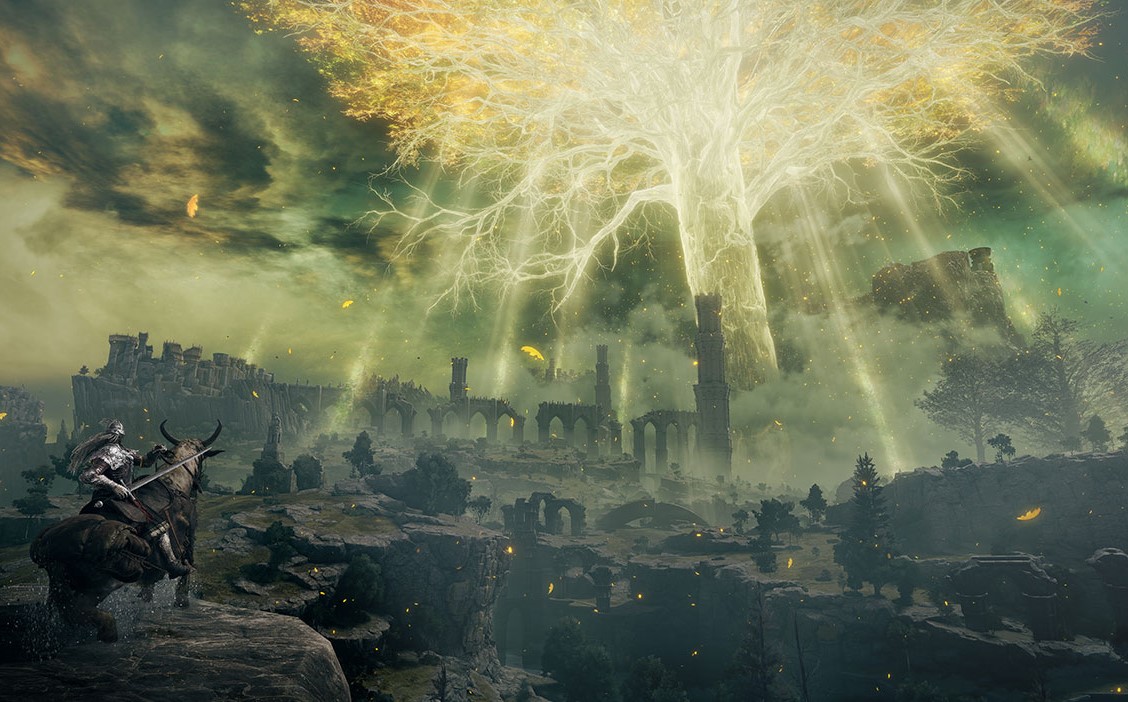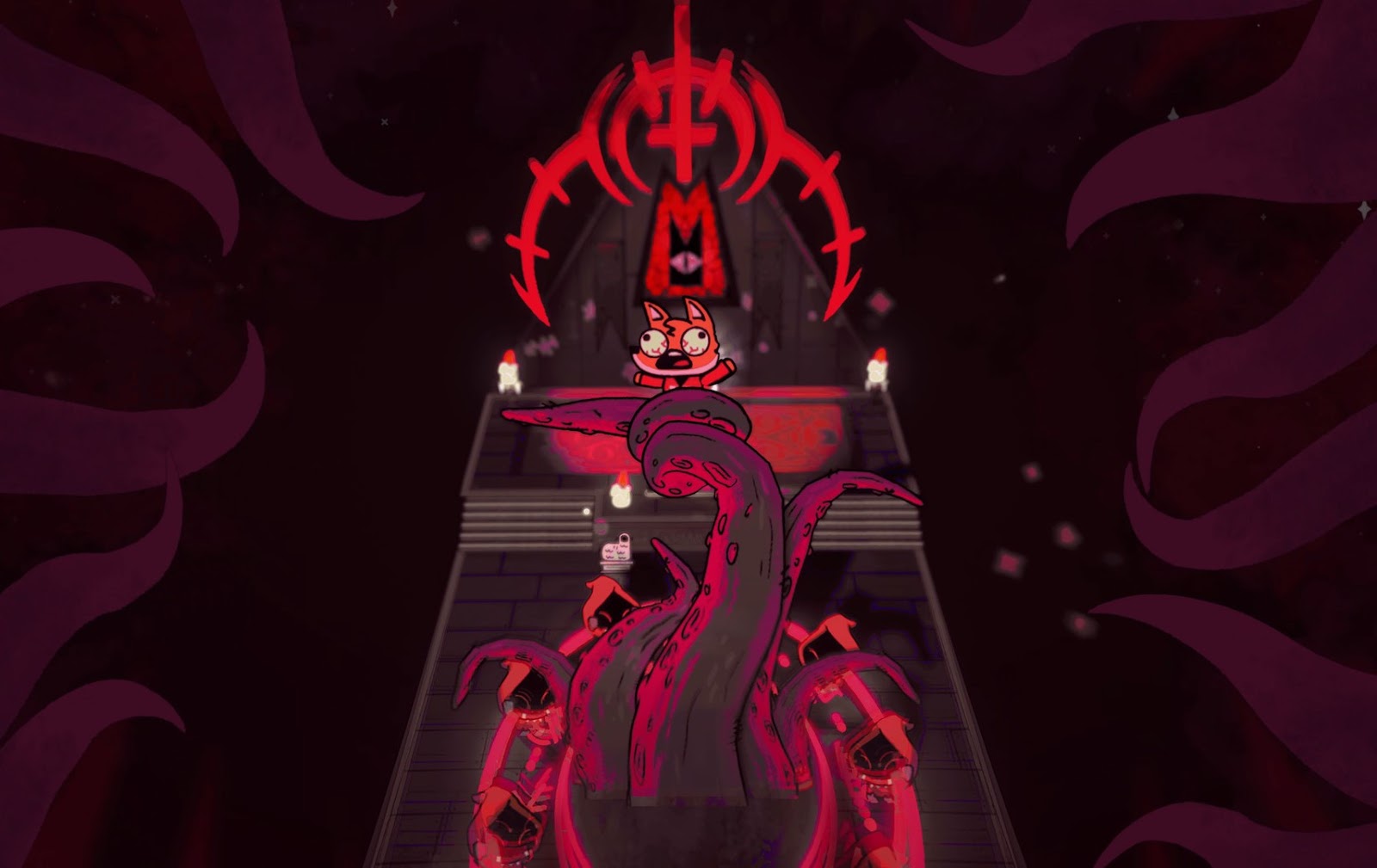Elden Ring feels like the journey that developer, FromSoftware, has been on for the past 28 years has finally come full circle. In 1994 there was King’s Field, then in 2009, it was Demon’s Souls. Then came the Dark Souls series, but it feels like 2022’s Elden Ring is more akin to a new re-interpretation of King’s Field and Demon’s Souls than it does its more recent cousin. That’s my interpretation of it, anyhow, but regardless of where you think it fits in, it is magnificent. As someone that likes to gloat (jokingly, I swear) about being a fan of the Souls games before they were even invented, I love the dark and evocative gothic fantasy of Elden Ring more than I’m going to be able to articulate in words.
There is a kind of vibrant melancholia to Elden Ring that infuses its every pore, and it is difficult to point to specific examples to highlight. However, as a tone and atmosphere, it does lend it a very subtle difference to the Dark Souls series, and does better recall Demon’s Souls or the King’s Field. Where the Dark Souls series felt like a case of steadily ramping both in terms of action and aggression, Elden Ring maintains a greater languidly throughout. Part of that is the open world approach, which acts to slow your progress down physically by putting greater distances between things. But there’s more to it than that, too. There’s a dirge-like and methodical quality to the pacing to key plot points, discoveries and revelations within Elden Ring that is haunting, and that too is a slice or two slower than the Dark Souls games. Now, perhaps that’s just reflective of how I made my way through the adventure, but I enjoyed it the more because of it because it more closely mirrored the rate I made it through those earlier titles. The danger felt more significant when there was a greater build-up to the encounters, and the sense of reward for making progress or finding some artefact of antiquity was all the greater. You have more time to muse on what you experience in Elden Ring, with FromSoftware using their experience with this genre and greater power available to them to deliver something that is so masterfully paced it’s hard to think of a moment where you feel like the game’s either hurrying you or allowing itself to grind to a halt. That is all the more impressive when you consider that most other open world games are paced horribly for either giving you too much to do, or too little. FromSoftware’s people didn’t allow the open world structure trap that most other developers fall into to dominate their vision, and that’s perhaps the biggest compliment that you can pay to the game of all.
It will be familiar to anyone who has played a FromSoftware title in recent years, of that there is no doubt. Changing the name of the currency and experience system from “souls” to “runes” and the rest stops from “bonfires” to “sites of grace” doesn’t really do much to change their mechanical role. The combat system will, likewise, feel comfortable, though the addition of spectral steed, Torrent, to the mix does add some interesting quirks and tactical options. Boss battles remain impressive for their intimidating quality, but the size and scope of the beasts seem to have now capped. Finally, while the world design does indeed lend scope to the journey, there are also plenty of dungeon-like areas that show FromSoftware hasn’t lost its skill when it comes to structuring intricate, compelling labyrinths. Additionally, Elden Ring does have some less-than-subtle ways of funnelling you across the world according to the “right” pathway (follow the stream of gold suspended in the air), which Souls games would generally do through the shaping of their corridors, so in many fundamental and structural ways, this new work is really just a rejig of the way the Souls games have always done things. That’s not a criticism, but an observation; anyone coming into Elden Ring expecting a revolutionary rather than iterative work will be disappointed.
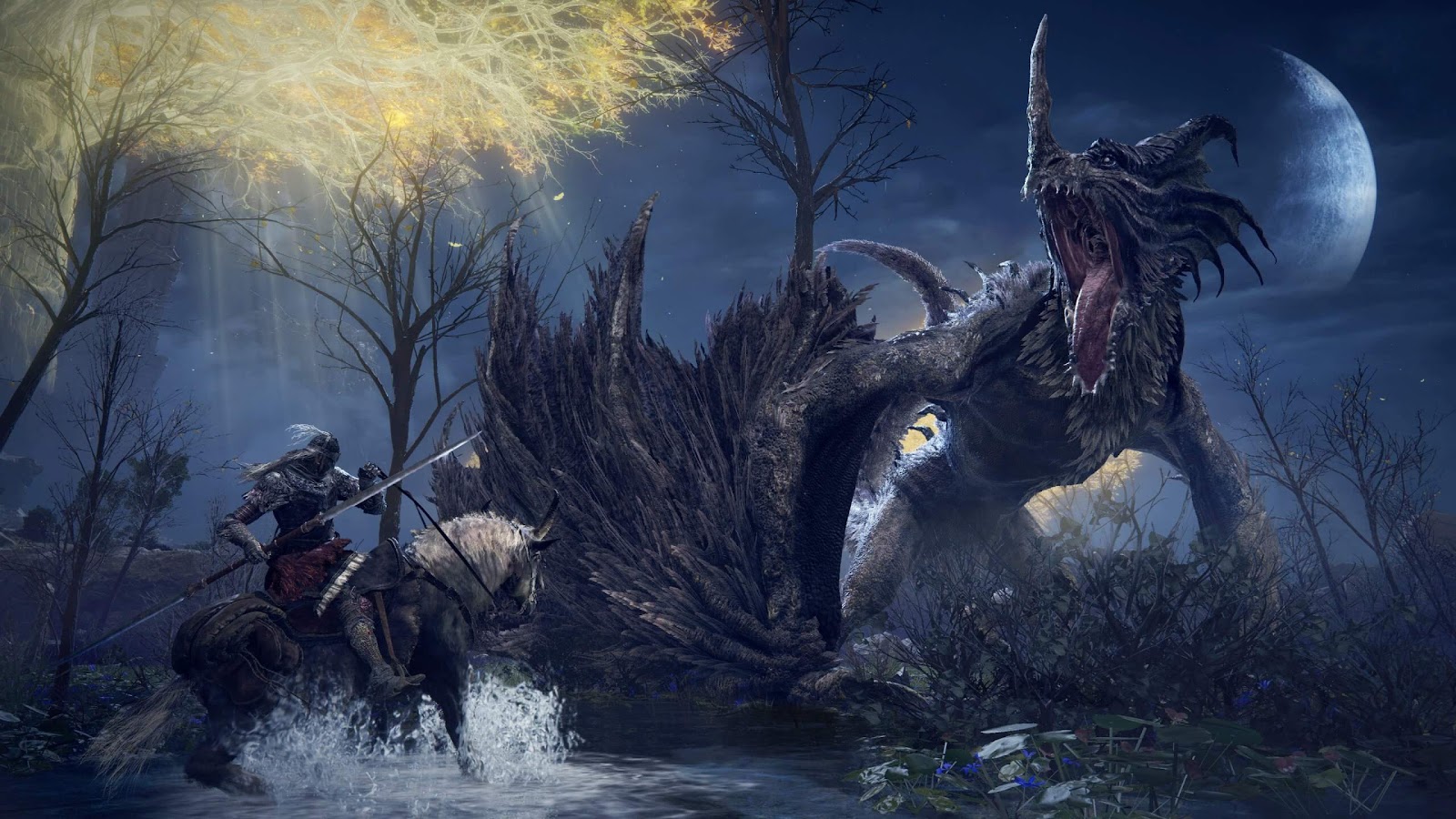
Because the world is now more spacious, it’s quite easy to avoid a huge number of encounters or enemies if you want to. In fact, you’re encouraged to think carefully about what you do attack right from the start. The very first enemy that you come across in the open world is a brute of a thing – a hulking mounted knight – and it’s very unlikely that you’ll be able to take that thing down at that point in time. To reach the first enemies that you’ll actually be able to defeat, you’ll need to circle a little around the knight and you’ll come to a rest spot and merchant, and just beyond that, you’ll find a forested area with some standard soldiers to fight. (As a hint for new players here – on the coastal side of the opening plateau is a really good “entry-level” dungeon that you can easily miss if you follow the obvious path – you should make that digression first). Elden Ring teaches another important lesson soon after because, after a trek through a forest, you come to some ruins that are filled with some powerful soldier-like enemies. Rather than barrel through it, which would mean certain doom, you instead need to scout around the edges, pick off the enemies one at a time, make use of the stealth feature to deal with a horn-blower enemy (who will immediately summon a legion on you if they spot you) and finally take on the captain of the garrison in a one-on-one fight, before descending a pathway underground to recover a (really) valuable treasure. None of this is explained to you. There’s no helpful ally telling you “we gotta sneak in there,” or “this enemy is too powerful for us right now.” Elden Ring doesn’t feature many tutorials or guides at all. Rather, it lets you learn through making mistakes, trying things and being creative, and striking a balance between combat and prudence.
Again, this isn’t that different to the Souls games. There have always been particularly tough enemies to tackle down passageways in these games. You’ve always had to scout around to find the best path through at first, before coming back at a later date to take on the tougher pathways on the promise of treasure and new areas to explore. The spatial element of Elden Ring adds another dimension to this process, but the structure itself has always been there. What Elden Ring does do particularly well this time around, however, is make it clear the “correct” path to follow versus the dead ends or treasure hunts. If you’re not following the golden trail then you know that what you’re going to run into will probably be much harder, but the rewards will also be much greater. On the other hand, if you just want to follow the “set” route, then you can do that too, and you’ll be able to progress through the game without feeling stuck or accidentally landing yourself in a place that you shouldn’t have, without really understanding how to get yourself back on track. It’s a combination of linear adventure and optionally non-linear bonus stuff, and that’s a brilliant balance to strike.
I think we all guessed how well Elden Ring would play, though. That was a given, and the only reason I’ve spent so much time comparing the structure to Dark Souls, and the atmosphere, tone and pacing to Demon’s Souls and King’s Field, is because this game has been designed with those players in mind. I think that the FromSoftware team understood that they were not going to find a new audience with this game, and as well made as it is, it’s also a reality that people who didn’t previously enjoy Soulslikes will already know to avoid Elden Ring. The big question mark was always going to be the storytelling, particularly with the involvement of George R.R. Martin. I am thrilled to say that I got barely a whiff of Martin out of Elden Ring. He’s a decent enough author, but, also, not someone who I would inherently assume adds to the Souls storytelling tradition. I’m sure his influence is there in the background lore (which, being entirely honest here, I’ve barely started to grapple with), but tonally and aesthetically this narrative remains very much the work of FromSoftware and Miyazaki Hidetaka, to my great relief.
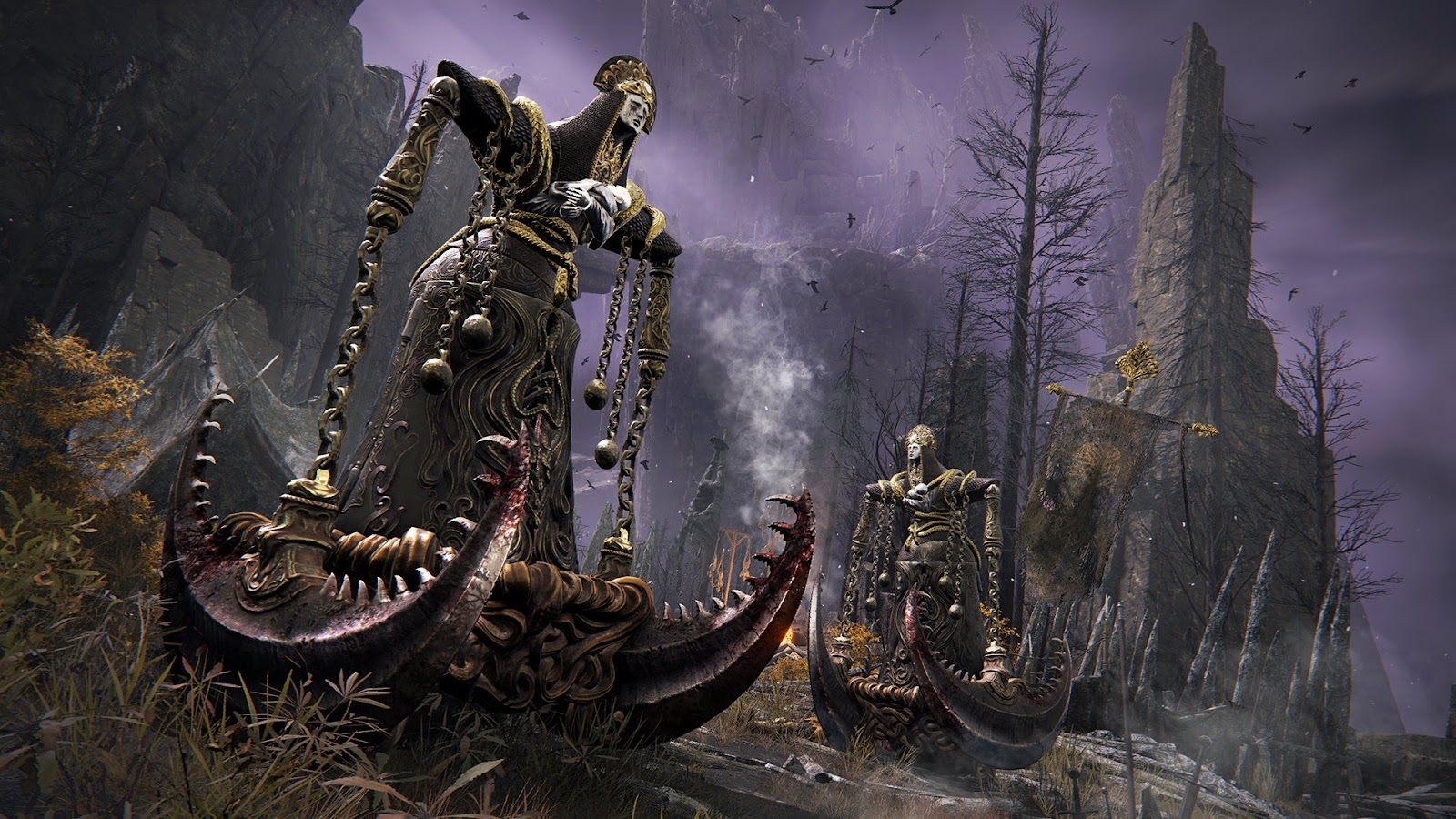
There are a lot of people that find the now-famous storytelling technique of Miyazaki to be infuriating. Being upfront about it, Elden Ring is much the same, and proudly so. Pieceing the fantasy together really involves tracking down artefacts, reading descriptions of items, and paying close attention to every conversation, and eventually it will come together like one giant jigsaw. There’s very little linear story to follow, and in an industry that is usually all about spoon-feeding players the narrative meaning in a near-condescending manner Miyazaki’s work and respect for the imaginations and inquisitive nature of his players often feels like it reaction to the other extreme, to being obtuse to the point of obnoxiousness out of an arbitrary need to be unlike the rest of video game storytelling.
The anecdote is that Miyazaki grew up as an avid reader but a struggling one, so would use his imagination to fill the gaps in between the bits of books that he could understand. I absolutely love this anecdote but what I really like about Miyazaki’s games – and Elden Ring being perhaps the best-realised example of it – is the way that they play on the literary tradition of works like The Pilgrim’s Progress.
For those that are not familiar with The Pilgim’s Progress, it is a novel written by John Buyan in 1678, and widely considered to be the first novel written in English. It is a Christian allegory, which tells the story of a pilgrim, weighed down by a great burden, who is set on a great and deeply symbolic journey. He first leaves his hometown, the City of Destruction, with the goal of reaching the Celestial City (Heaven), sitting atop Mount Zion. Along the way, this character (actually called Christian), suffers a number of torments and tests, falls into the Slough of Despond – a swampland of doubt and fear – passes through The Wicket Gate and traverses the King’s Highway. Then he’s set upon by Beelzebub’s archers, saved by Jesus himself, and visits the House of the Interpreter. His journeys take him to the Hill of Difficulty, the Valley of the Shadow of Death, and – spoiler! – he finally reaches the Celestial City.
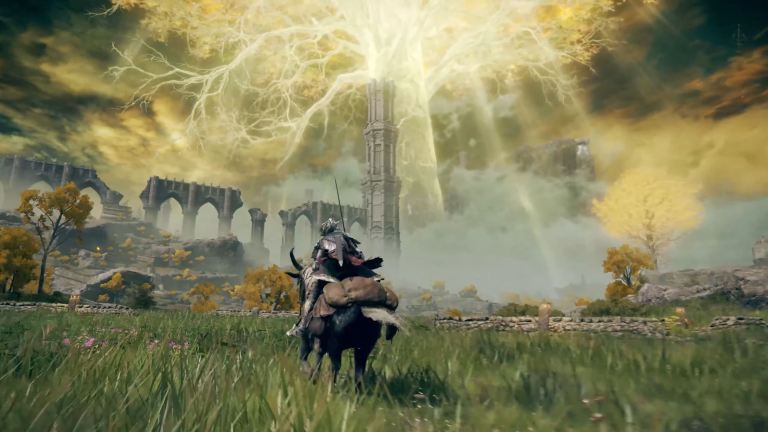
The Pilgrim’s Progress is obviously preachy, but if you can get past that, it’s actually an incredible story about a journey and, while Elden Ring isn’t preachy, the parallels here are incredible. Elden Ring is a deeply symbolic story of a journey by a heavily burdened pilgrim, who, along the way, suffers a number of torments and tests, has to deal with godforsaken swamplands (no one ever likes these, but FromSoftware loves tormenting us with them), with the ultimate goal of reaching somewhere special and spiritual (no spoilers here!). The traveller is set upon by demonic enemies, encounters the rare bastion of goodness in a blighted land, and every area that they visit is named as though Bunyon himself was on the writing team. Of course, it’s unlikely that Miyazaki has read The Pilgrim’s Progress (though it has been translated into Japanese), and thought to himself “well, let’s do that!”, but the densely allegorical and symbolism-drenched narrative, backed up with the gothic setting, is a clear parallel. The simple reality that Bunyon’s book has been so influential over hundreds of years now that, even if the inspiration is tertiary and Miyazaki merely read a book by a person that was inspired by The Pilgrim’s Progress, you can see it in there in Miyazaki’s work, clearly and explicitly.
In the interests of preserving spoilers, I’m not going to give away anything that happens within Elden Ring, but I will say that the story is mature and articulate, once you start piecing it all together. It feels like every rock and blade of grass has been placed to contribute to the whole, and that no matter how deeply you plumb the depths of the world and characters, there are going to be more secrets and stories from antiquity to uncover. I am very much looking forward to coming back in a year or so to watch people’s efforts to piece the world and broader story beats together, because the nature of storytelling this oblique is that people are going to have different theories and interpretations on what they see.
The one sore point in the whole game is that FromSoftware put crafting in the game. Crafting is the most obnoxious gameplay mechanic of all, because it embodies busywork and little else. Everywhere you go you need to keep your eyes out for the most mundane stuff – berries, twigs, stones and whatever, and then button mash as you explore to collect it all from the ground around your avatar. From there you’ve got to deal with recipes and supplies and… None of it actually adds anything to the experience. Picking up a quiver of 20 arrows that you find lying on the ground is much more efficient than crafting twenty arrows after finding twenty sticks and bits of metal for the same result, when the point of them being in the game is to shoot arrows at enemies. Elden Ring is far less egregious than most (Horizon, hello), but it’s still a pain, and a system and mechanic that detracts, rather than adds. The FromSoftware formula never needed it.
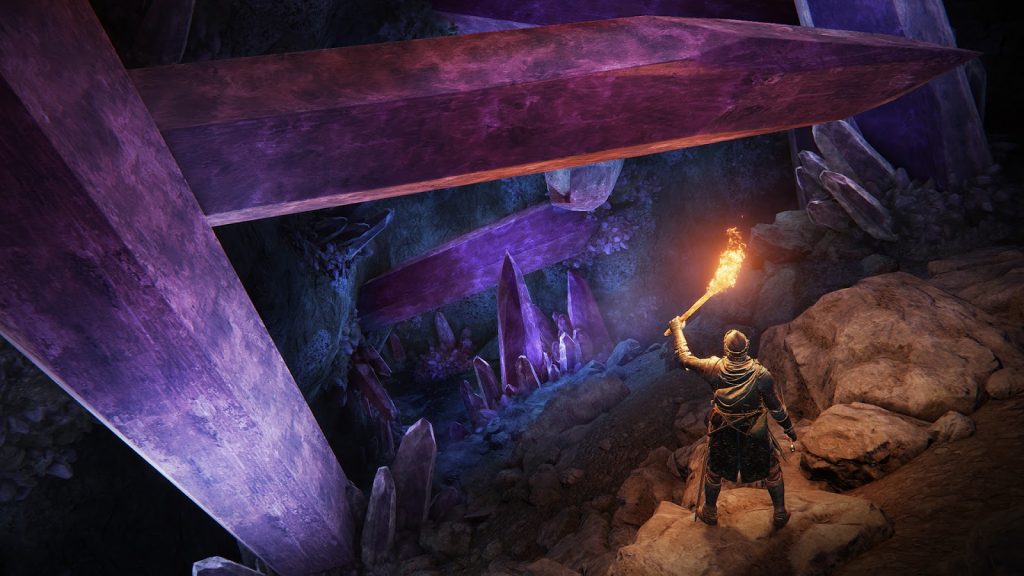 With Elden Ring, we’re in masterpiece territory. FromSoftware is consistently great, of course, and I don’t mean to denigrate Sekiro or Dark Souls here, as they’re all exceptional, but Elden Ring has all the potential to have a similar level of impact as Demon’s Souls here. Spinning a richly evocative and carefully paced tale of darkness and misery, Elden Ring isn’t the most easygoing game, either in terms of its storytelling or general difficulty. However, not only is it majestic in scope and vision, it is one of the most perfect examples of how an open world structure can be used to the thematic benefit of the game, rather than just be a massive space used to hurl worthless content at players. In this way, Elden Ring joins a very elite group indeed… and it has arguably topped it.
With Elden Ring, we’re in masterpiece territory. FromSoftware is consistently great, of course, and I don’t mean to denigrate Sekiro or Dark Souls here, as they’re all exceptional, but Elden Ring has all the potential to have a similar level of impact as Demon’s Souls here. Spinning a richly evocative and carefully paced tale of darkness and misery, Elden Ring isn’t the most easygoing game, either in terms of its storytelling or general difficulty. However, not only is it majestic in scope and vision, it is one of the most perfect examples of how an open world structure can be used to the thematic benefit of the game, rather than just be a massive space used to hurl worthless content at players. In this way, Elden Ring joins a very elite group indeed… and it has arguably topped it.

